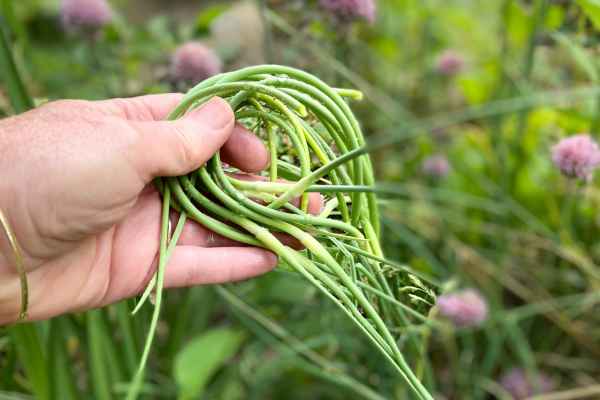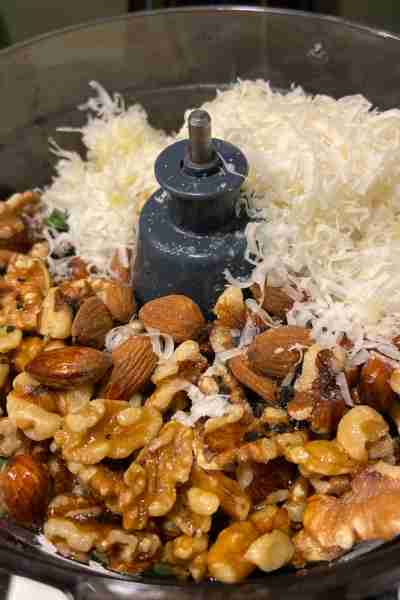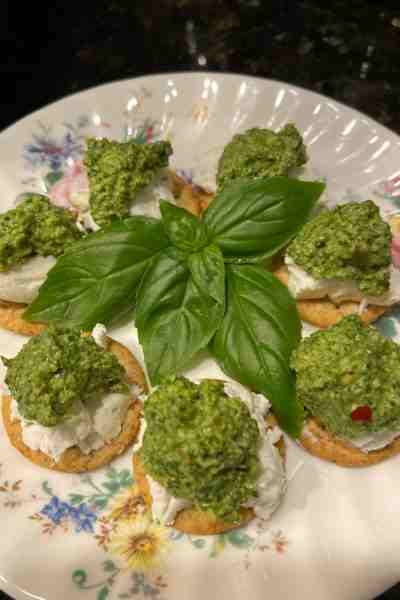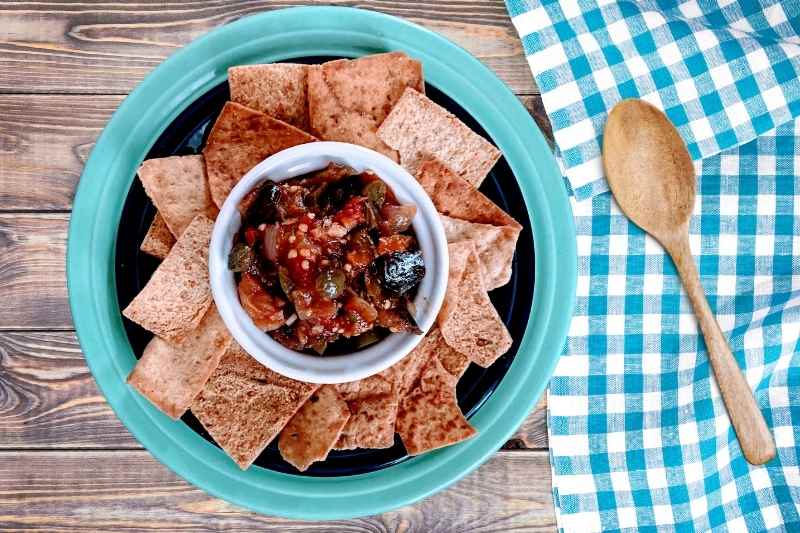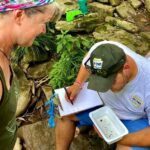Garlic scapes are the tender long curly cue stalks (often with a flower head) of the garlic hard-neck plant. When cut, these scapes will help the plant produce larger garlic bulbs instead of the scape and flower. Garlic scapes can be used in substitution for garlic bulbs in your favorite recipes.
Garlic scapes can usually be found at farmers markets. If you or someone you know grows hard-neck garlic, the scapes are prolific in the early summer months. Read our blog about planting garlic at home.
This Garlic Scape Kale Pesto is versatile and can be used in many recipes. It’s delicious as a topping for goat cheese and crackers, as a creamy pasta sauce, in soups, as a sandwich spread, or as a base for pizza and calzones. Be creative and find your favorite ways to use this recipe.
Makes approximately 2 ½ cups
Ingredients:
- 3 cups fresh kale, washed, the center vein removed, and chopped
- 8 garlic scapes, washed and chopped
- 3/4 cup roasted walnuts
- 3/4 cup roasted almonds
- 3/4 cup shredded parmesan cheese
- Juice of 1 freshly squeezed lemon
- 1/4 cup extra virgin olive oil
- 1/2 tsp each of sea salt and coarsely grated black pepper
- 1/4 tsp red pepper flakes
Instructions:
- Fill a 3-quart pot 3/4 full of water, then add 1/4 tsp of salt and bring to a boil. Add the chopped kale and cook for 4 minutes. Immediately strain kale, rinse with cold water to stop the cooking process, and drain, removing as much water as possible.
- Add the well-drained kale, garlic scapes, roasted walnuts, and roasted almonds to the bowl of a food processor. Pulse till the nuts are in small bits.
- Add the remaining ingredients: parmesan cheese, lemon juice, extra virgin olive oil, sea salt, black pepper, and red pepper flakes. Pulse until the mixture is well incorporated, scraping the sides of the bowl with a spatula as needed until the mixture is smooth.
This pesto freezes well and can be used in the winter for your favorite cold weather recipes.
You can also package and freeze garlic scapes, then substitute them in place of garlic cloves in recipes for future use.
Recipe compliments of OPL Master Naturalist and Home Chef Yvonne Dwyer

